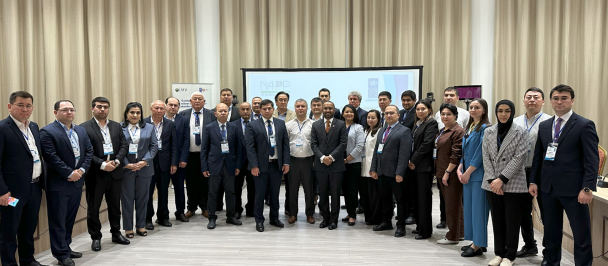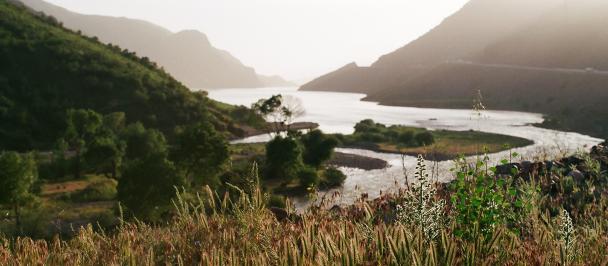Photo: UNDP Uzbekistan
“Market Transformation for Sustainable Rural Housing in Uzbekistan” is our joint project of with the Ministry of Construction of the Republic of Uzbekistan, launched in 2017 under grant support from the Global Environment Facility. Dynamic Uzbekistan elaborates on the plans and tasks of the project and shares significant initial results, which are transforming the thinking of the rural population on the possibility of comfortable living.
More than three years have passed since Uzbekistan signed the Paris Agreement on Climate Change, a global climate treaty adopted under the UN Framework Convention on Climate Change. The agreement obliges its participants to take measures to reduce the content of carbon dioxide in the atmosphere from 2020. The date of signing the Agreement almost coincided with the approval by the government of Uzbekistan of a project of the Ministry of Construction of Uzbekistan to promote and build sustainable and low-carbon rural housing and rural settlements. Work in this direction has been successfully carried out from 2017 to the present, and the first quality results set a positive direction for the entire project.
Funded by the Global Environment Facility (GEF) and supported by UNDP, the project aims to achieve significant and innovative energy and resource efficiency targets in the rural residential sector. It will contribute to the reduction of greenhouse gas emissions at the local and global levels, and will attract more climate finance to the country, towards the aim of fulfilling the nation’s commitments under the Paris Agreement.
Rural housing construction accounts for most new residential construction in the country. About 70% of new residential construction in Uzbekistan is occurring in rural areas where almost half of the population lives. This trend will put a strain on the increased use of natural resources in the housing sector in rural areas, which will become especially noticeable in the next 15 years, when the population of Uzbekistan will increase by an estimated 20%. This means that by 2050, energy consumption will increase by more than 30%. Such a progress will lead to a visible threat to the energy security of Uzbekistan and will also increase carbon dioxide emissions into the atmosphere.
Project work and results
According to the Presidential Decree No. 5577 of November 14, 2018 "On additional measures to improve state regulation in the sphere of construction”, all housing under the State Programme on Affordable Rural Housing is to be energy-efficient, using designs made with the project support. In 2019, this amounted to more than 12,000 units. The main feature of such designs is the use of additional thermal insulation made of mineral wool (basalt fiber), which keeps homes warm in the winter and cooler in the summer, with about 30 percent less energy consumption.
In addition, the project supported the private investments into construction of 800 one-story three-room houses in five regions of the country (Samarkand, Surkhandarya, Fergana, Khorezm, and Bukhara), with not only the enhanced thermal insulation of the external walls, but also with photovoltaic plants with a capacity of 300 watts, as well as several houses also with solar water heaters with a capacity of 200 liters.
The first and main component of the project is piloting green mortgage scheme piloted by the primary national rural mortgage bank (Qishloq Qurilish Bank) for rural low-carbon housing equipped with solar panels to generate electricity for lighting. Qishloq Qurilish Bank became the mortgage partner of the project. A home buyer can get a mortgage from a bank and pay only the standard amount, and the GEF will pay off the incremental costs for solar panels and related equipment. Significantly, women took a greater part in the process of introducing green lending (53% of the total number of buyers).
The second component of the project is the development of energy efficient rural housing projects, strengthening the local material and technical base and production capacity for the construction of low-carbon and a low-cost Nearly-Zero Energy housing. As part of this component, a catalog of local companies producing energy efficient technologies and materials used in construction was developed.
The third component is improving the regulatory framework required to stimulate scale-up construction of low-carbon housing. The objective of the component is to strengthen minimum energy standards for buildings, and to ensure compliance with them. As part of the third component, building codes and regulations for housing were revised, with requirements that energy consumption for heating must be reduced by about 30 percent.
The objectives of the fourth component are aimed at stimulating the construction of low-carbon housing through spatial planning of rural settlements considered energy efficiency and climate consideration and increasing the demand for green mortgages, as well increasing interest, trust and acceptance of energy-efficient and low-carbon homes. These items are gradually being implemented with the assistance of a PR agency and through extensive coverage of the project in the media and social networks.
First reviews
In a year after the commissioning the first affordable low-carbon family houses occupied by homeowners in the pilot regions , UNDP conducted a user survey, which resulted positive response to all the work done.
The Ministry of Construction of the Republic of Uzbekistan, in cooperation with the UNDP/GEF, has installed 300 W solar panels in 121 houses in the Bukhara region. Yulduz Boymuratova, a resident of Romitan district of Bukhara region, commented on living in a new type house:
“I have two sons who now work in Russia as labor migrants, and I live here. They visit me.
I am glad that the state gave me the opportunity to purchase this house - for me it is a great support. We manage to save on electricity, despite the fact that so far, the energy of solar panels is enough for lighting only.
Previously I rented an apartment in a multi-story house. Now I have my own yard - it is small, but it is my land. Renting was difficult, and I wanted my own place, so I decided to buy a house by taking out a state mortgage.
It’s been 1 year since we moved to the new house and experienced winter already. It was warm here due to the thermal insulation. We did not feel heat in the summer inside the house as well, so there was no need to turn on the air conditioner and spend extra money for its use.
We are happy and love living here. The house is modern, green and energy-efficient”.
Additionally, Husniddin Nurmuhammedov, the representative of the local company producing energy efficient technologies and materials for construction the energy-efficient houses announced, that since 2020 the solar panels installed have a power of 600 W and are designed to provide each apartment with lighting and charge 3 outlets (refrigerator, TV and charger). “We try to give new opportunities to each new project, and we see how this changes people's lives for the better”, said Mr. Nurmuhammedov.
Within the framework of the UNDP/GEF and the Ministry of Construction project, 528 more units of multi-apartment affordable rural housing are being enhanced with solar energy and eligible for green mortgage support in 2020. As both the population and the construction industry become more aware of the advantages of energy-efficient and low-carbon house design, a broad national transformation in comfortable, affordable, green rural housing has begun, and is growing year by year.

 Locations
Locations

